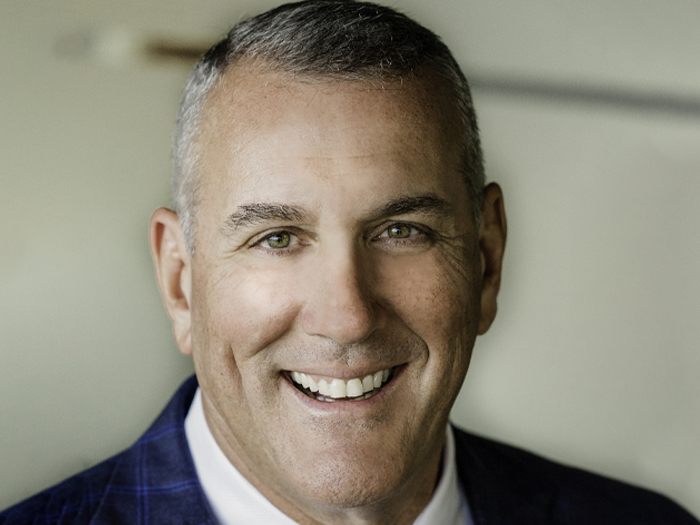Employee Litigation
Some Surprising States Lead in Employment Litigation Lawsuits

Small and mid-sized businesses continue to get hit with employment practices lawsuits – with hot spots scattered across the country, according to the “2015 Hiscox Guide to Employee Lawsuits” report released last month by the Bermuda-based specialist insurer.
Companies based in New Mexico face the greatest risk nationwide, with a 66 percent higher chance of facing an employee charge than the national average, according to Hiscox’s analysis of data on employment charge activity from the U.S. Equal Employment Opportunity Commission and its state counterparts.
Other states and jurisdictions where employers are at a high risk of employee charges include Washington, D.C. (65 percent above the national average), Nevada (47 percent), Alabama (41 percent), California (40 percent), Mississippi (39 percent), Delaware (35 percent), Illinois (34 percent), Arkansas (22 percent) and Tennessee (20 percent).
Natalie Douglass, senior managing director, management liability practice at Arthur J. Gallagher & Co. in St. Louis, said the study results were “interesting and a little bit surprising.”
“When we think about employment risk, we tend to focus on severity of litigation to come up with hot spots like California or Florida. It’s a little surprising to see states like New Mexico or Alabama when we focus on charge frequency.” — Natalie Douglass, senior managing director, management liability practice, Arthur J. Gallagher & Co.
“When we think about employment risk, we tend to focus on severity of litigation to come up with hot spots like California or Florida,” Douglass said. “It’s a little surprising to see states like New Mexico or Alabama when we focus on charge frequency.”
The reason was that Hiscox adjusted the EEOC data for employer population, she said. For example, states like New Mexico and Alabama have between 1 percent and 3 percent of the total charges in 2014, but adjusting for the states’ employer population, “the data is shown in a new light.”
“From an insurance perspective, larger employers aren’t going to be as affected by increased charge frequency, as their retentions are likely large enough to address those claims,” Douglass said.
“The bigger impact will be with small employers, increasing their need for insurance, and also loss prevention measures in that segment.”
Laws Difficult to Navigate
Bertrand Spunberg, practice leader, executive risks at Hiscox USA, said that “some states … can be very difficult to navigate because their fairness laws are often broader than the federal law, so employers must commit themselves to comply with these state laws to a higher standard.
“Every business should expect a very real exposure from these lawsuits.” — Bertrand Spunberg, practice leader, executive risks, Hiscox USA
“But that’s a tall order for smaller companies that don’t have the resources and expertise to keep track and comply with changes in state laws; insurance can help protect them so they won’t be caught off guard,” Spunberg said.
Indeed, one in five small and mid-sized businesses will face employment charges with an average cost to defend of $125,000, which includes expenses such as attorney’s fees and settlement costs, according to Hiscox claims data for firms with under 500 employees.
For those that did have insurance coverage, the average deductible was $35,000, compared to the $90,000 balance paid out by their insurance company.
The median judgment for cases that go to trial was approximately $200,000 for employment lawsuits adjudicated by the courts, while one in four cases resulted in a judgment of $500,000 or more.
“Every business should expect a very real exposure from these lawsuits,” Spunberg said.
Robert Hale, a partner at Goodwin Proctor LP in Boston, said that there was no one explanation for why certain states have a spike in employment litigation, compared to the rest of the country “as it is clear that there are significant differences in both the legal landscape and the cultural and employment settings among these different states.”
“Bottom line, the reality is that we’re living in a time of transition in employment law, and if you are not paying attention, you’re going to get into trouble.” — Karl Lindegren, partner, Fisher & Phillips LLP
“If it were simply a matter of the degree to which there’s protective legislation for employees, then some of the Northeastern states would be in the mix,” Hale said.
Class-Action Litigation Risks
Of particular concern are cases involving independent contractors and classification of employees for overtime pay eligibility, he said.
Unlike most other areas of employment law risk, these create a risk of class-action litigation. Because of the number of employees affected, the costs associated with making a determination in those areas is potentially much greater than the cost for an employer that makes an individual employee termination decision.
Hale said there has been a “sea change” in the past 15 to 20 years regarding the purchase of employment practices liability insurance to cover the risks of employment litigation. It was a rare product for many years, he said, but now it’s a common part of any business insurance portfolio.
“The result is that the insurance companies have created a significant amount of market pressure on the employment litigation defense bar and, frankly, insurers have been able to use that market power to decrease rates charged by defense practitioners,” he said.
“That has affected the market for those legal services even for matters that are not covered by insurance.”
Tom Hams, managing director with Aon’s financial services group in Chicago, said his firm continues to see a real focus on disability claims, “which is the hardest charging area right now and the focus of the EEOC.”
“Employers have to be very sensitive around the issue of accommodations and when taking employment actions involving employees who are perceived to have disabilities.” — Tom Hams, managing director, Aon financial services group
“Employers have to be very sensitive around the issue of accommodations and when taking employment actions involving employees who are perceived to have disabilities,” Hams said.
There is also a “huge trend” of lawsuits alleging violations of the Fair Credit Reporting Act, and “if an attorney can find one job application with any kind of flaw, they can turn it into a mass or class-action suit,” he said.
Moreover, “ban the box” — eliminating questions about criminal background in job applications — has become a hot topic because of changes in federal, state and local laws challenging the practice.
“As a result of the ‘ban the box’ and FCRA activity, employers should make sure they have their job applications reviewed by their counsel to make sure they are doing the right thing,” Hams said.
Training is a Necessity
Brian Weiss, vice president, regional leader, FINEX claims at Willis in New York City, said there has been an overall slight downward moment in employment practice claims – it’s “certainly not as high as right around the financial crash, but still elevated.”
“It’s going to take some time before we get to pre-crash numbers, but slowly and steadily we may get there,” Weiss said. “I’ll be curious after this study if we’ll see carriers seek sublimits and sub-retentions in those jurisdictions.”
For Wiess’ clients that have high concentrations in high-risk areas, he recommended they make a special point to train both managers and employees. Many law firms, he said, offer conduct training at employer sites.
He noted that some state laws may lead to higher claims or particular claim trends. For example, in Alabama, there has been from a 1 percent to 5 percent spike of total EEOC color discrimination claims over the past 5 years, as well as a spike in religion discrimination claims, from 2 percent to 5 percent of total national claims over the same time period.
“So if you have a high number of employers in one of these states, you need to train to the laws and standards of that state,” Weiss said. “At the very least, managers need to have a thorough understanding of the applicable laws in these jurisdictions.”
“Bottom line,” said Karl Lindegren, a partner of Fisher & Phillips LLP in California, “the reality is that we’re living in a time of transition in employment law, and if you are not paying attention, you’re going to get into trouble.
“If you continue to do what you thought you were always able to do regarding the Fair Credit Reporting Act and background checks, then you will get into trouble. What I tell my clients is that if they do the right thing and treat people the right way, it will go a long way to winning a lawsuit, and even avoiding a lawsuit.”










